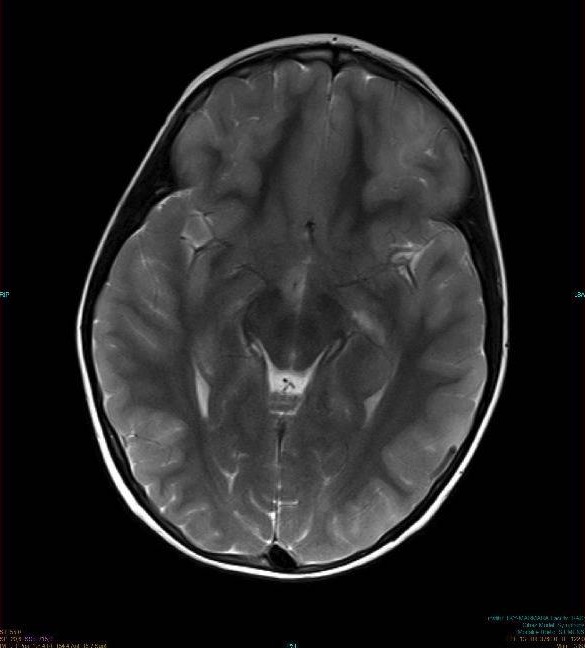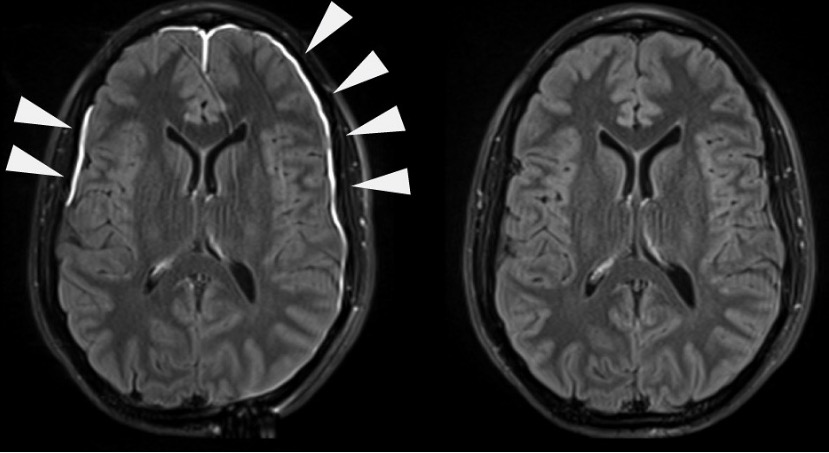Playlist
Show Playlist
Hide Playlist
Meningitis and Encephalitis: Examination
-
Emergency Medicine Bord Meningitis and Encephalitis.pdf
-
Download Lecture Overview
00:01 So physical exam maneuvers that you wanna do for your patient. 00:04 Kernig’s sign is one of them. 00:06 And what this basically is,is you have your patient, you lift their leg up off the bed and try and straighten their leg up the knee. 00:13 If they're unable to straighten their leg more than a 135 degrees without any pain, then, that is Kernig’s sign. 00:22 So they're not able to straighten their knee. 00:24 What Kernig’s sign is doing and Brudzinski’s sign which is the next one that will be discussed, what they’re doing basically is they’re putting stress or kind of pulling on the meningeal system. 00:36 And if they have pain or discomfort with these maneuvers, what that’s indicating is that there's irritation of the meningeal system. 00:44 So this is Brudzinski’s sign. 00:46 This is when a patient has severe neck stiffness. 00:48 So that when you flex their neck, they have actually flexion of their hips and their knees, and again, due to the irritation of the meningeal system. 00:58 So what do you look for or see on physical exam? You wanna pay attention to those vital signs. 01:04 So patients who have an infection maybe tachycardic, they may have a fever, they might have low blood pressure. 01:09 If you're not sure if someone has a fever, a key way to check and see and get the most accurate temperature is by checking a rectal temperature. 01:18 You wanna see if someone has altered mental status, or if they’re confused or disoriented. 01:22 You wanna check Kernig's and Brudzinski’s sign. 01:25 Important to note that these are not the most sensitive or specific tests, so it’s not like if someone doesn't have it, they don’t have meningitis. 01:33 But it’s something else that can potentially further support your diagnosis. 01:37 You wanna check for neck stiffness, have your patient flex their neck forward. 01:42 You wanna look for in the back of the eye. 01:45 And look and see if there’s any papilledema or decreased venous pulsation in the back of the eyeball. 01:51 So those are the important things that you wanna make sure you look for. 01:54 Another important physical exam sign or a finding that you may see is a rash and especially Neisseria meningitides, the rash is classically a petechial or purpuric rash that starts on the lower extremities. 02:09 This is a situation where you wanna make sure if you’re worried about meningitis, that you fully disrobe your patient, which we encourage for all patients who come to the Emergency Department, but especially in this situation that you disrobe them, that you take a look all over their body to look for this rash. 02:23 So a petechial or a purpuric rash is a rash that when you touch it, it does not blanch, it does not get white. 02:29 It’s caused by broken blood vessels. 02:32 So that the very classic finding that you'll see in Neisseria related meningitis. 02:37 So looking and checking for that rash is important. 02:40 There are a few other things that are on the differential diagnosis here for patients who present with these symptoms. 02:48 So brain abscess is a big one here. 02:51 It's a rare diagnosis that we make in the Emergency Department. 02:54 But it’s something you definitely wanna consider. 02:56 A brain tumor is another. 02:58 Subarachnoid bleed or intracranial hemorrhage is discussed in another lecture. 03:03 But that can definitely cause patients to present with a headache, and meningeal signs, and then a spinal epidural abscess. 03:11 A big risk factor for that is IV drug use because that IV drug use can seed that epidural space with bacteria.
About the Lecture
The lecture Meningitis and Encephalitis: Examination by Sharon Bord, MD is from the course Neurologic and Psychiatric Emergencies.
Included Quiz Questions
What do Kernig's and Brudzinski's sign indicate?
- Meningeal irritation
- Cervical injury
- Lumbar spondylosis
- Lower motor neuron injury
- Upper motor neuron injury
Which of the following signs is LEAST likely in meningococcal meningitis?
- Hypothermia
- Tachycardia
- Altered mental status
- Papilledema
- Skin rash
Customer reviews
5,0 of 5 stars
| 5 Stars |
|
5 |
| 4 Stars |
|
0 |
| 3 Stars |
|
0 |
| 2 Stars |
|
0 |
| 1 Star |
|
0 |





